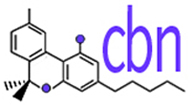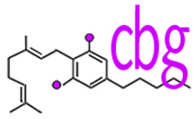What are cannabinoids? Well, here I go with a short, quick fact – Cannabis contains cannabinoids, and our bodies have the cannabinoid (CB) receptors for these cannabinoids built right into our physiology. This was first discovered in Israel by scientist Raphael Mechoulam the 1990’s, so it is a fairly new discovery.
These CB receptors found throughout our bodies are part of the Endocannabinoid System. This body system has many purposes, (but that is for a different discussion). For now, know that our bodies actually produce their own cannabinoids (called endocannabinoids), so there must be a reason for that, right? Short answer is YES! Science once again has the answers.
Our bodies have cannabis receptors in order to receive cannabinoids and do with them what is needed at that time, and for each of us that will be different depending on our state of health. Some cannabinoid receptors are of course located in the brain and central nervous system, (CB1s), but they have also been discovered to exist outside the central nervous system (CB2s) in many places including our lymph tissue and immune cells. Right now you only need to trust they are right where our bodies need them to be, when they need to be there. These receptors receive endocannabinoids (produces by our bodies), and phytocannabinoids (from plants).
It’s my belief that cannabinoids from plants like marijuana, don’t necessarily work best alone, or when isolated, and definitely not when created synthetically. Whole plant medicines need all of their constituent parts to be the most effective. It is also my belief, based on my own study of aromatherapy and chemistry of essential oils, that it isn’t only the cannabinoids that hold marijuana’s power to heal. All parts of this plant’s chemistry work together in a symbiotic relationship to produce the most effective treatment for the ailment at hand, including cancers.
Some identified phytocannabinoids that are still in ongoing study by the scientific community have already revealed some of their remarkable medicinal values. The newest catchword in the marijuana community is CBD, so we’ll look at that cannabinoid first.
Cannabidiol is not pychoactive, meaning it won’t get you high like THC. Although not as commonly known as THC, which has it’s own list of rewards later, CBD has a long list of medical claims, including:
- Antibacterial
- Anti-Infammatory
- Controls certain cancers
- Decreases blood pressure in blood vessel walls
- Decreases or neutralizes psychoactive effect of THC
- Eases nausea
- Eases Pain
- Reduces blood sugar
- Reduces risk of nerve damage (neuroprotectant)
- Suppresses muscle spasms
- Stimulates bone growth
Pretty impressive list, don’t you think? Now we’ll look at good old THC.
Tetrahydrocannabinol
- Anti-Inflammatory
- Blood cleanser
- Controls anxiety
- Controls certain cancers
- Eases Nausea
- Promotes relaxation
- Psychoactive euphoriant
- Reduces risk of nerve damage (neuroprotectant)
- Relieves pressure in the eye
- Stimulates appetite
- Stimulates new growth in nerve tissue
- Suppresses muscle spasms
- Suppresses pain from nerve damage
Interestingly, THC comes to us two steps, first as delta9 tetrahydrocannabinol (THCA) which is very present in fresh green plant matter. It then converts to THC as the plant dries and/or is heated. Both are medicinal. THCa will not get you high. THC will.
The next three don’t have as good a resume, yet. They aren’t as far along in the numbers of studies as THC and CBD.
Cannabichromene
- Non-psychoactive
- Anti-Bacterial
- Anti-Fungal
- Eases pain
- Encourages cell growth
- Slows inflammation
- Stimulates bone growth
Cannabinol
- Mildly psychoactive in old, stale plant matter
- Cleanses blood
- Controls pain
- Sleep Aid
- Slows inflammation
- Suppresses muscle spasms
Cannabigerol
- Non-psychoactive
- Anti-bacterial
- Encourages cell growth
- Stimulates bone growth
This is a short list, but as said before, these are the more common cannabinoids with regards to medical marijuana at this time. Also worth noting, not all cannabinoids are found in all strains of cannabis, and certain strains from certain regions are stronger in some cannabinoids than others. In defense of Big Pharma, it is a never ending process to find them all and determine their individual uses, but since none are harmful in any way, why wait until we know everything when we do know they all will do a body good right now? Not that cannabis research is finally allowed in the US I pray they do more and more research.
When you purchase cannabis, your dispensary (in New Mexico) is required to do testing, so be sure to see the true test results to know what cannabinoids are in the product you buy. If your dispensary doesn’t have those test results, find a new dispensary.





